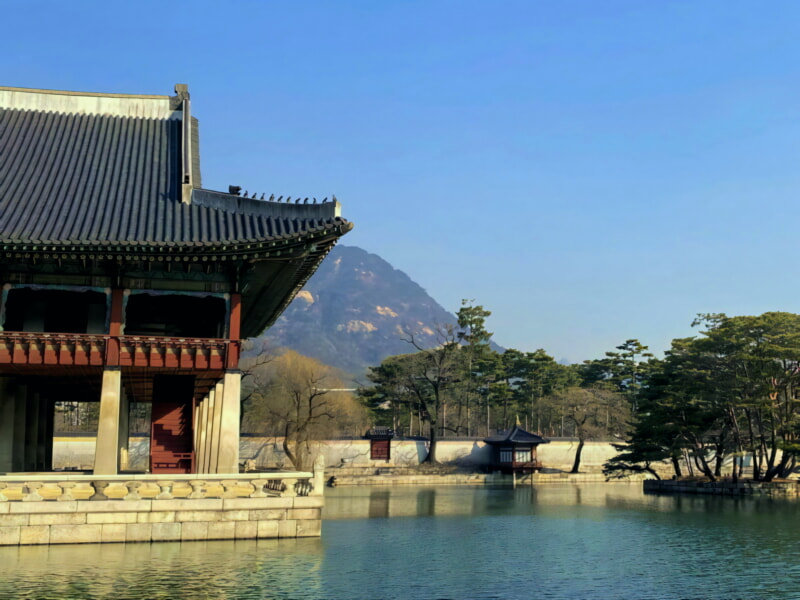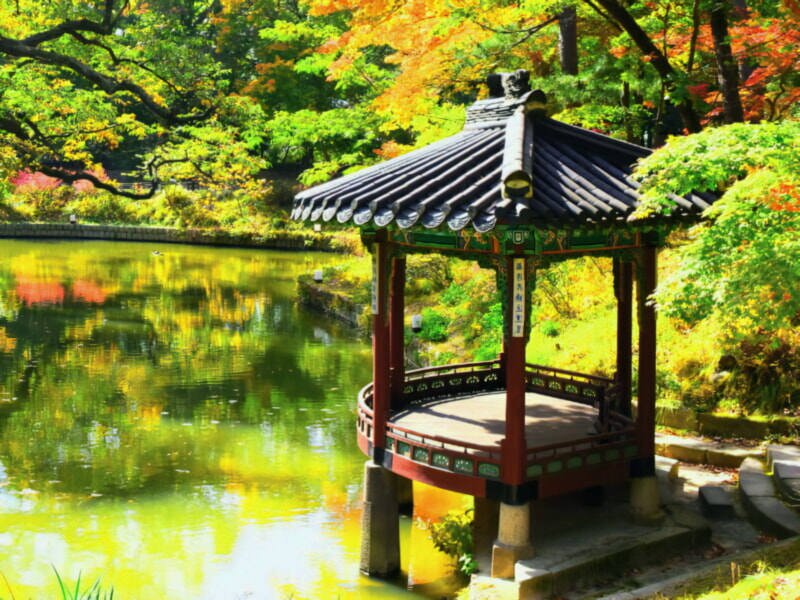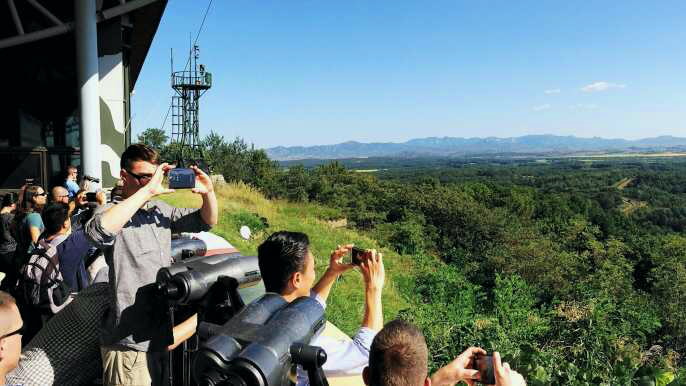From bustling urban hubs to verdant plantation fields, ancient temples and offshore archipelagos, Korea offers a variety of attractions that appeal to all types of travelers.
With four distinct seasons and fascinating history to explore, this country has something for everyone. It's also a great place to see the changing leaves of autumn foliage and take part in harvest festivals.
1. Gyeongbokgung Palace
Gyeongbokgung Palace is one of Seoul's five royal palaces and a must-see for anyone visiting South Korea. The opulent complex has survived wars, fires, occupations, demolitions and restorations over the centuries, to be restored today to its former glory.
Take some time to stroll the expansive grounds and admire its many pavilions, flowers gardens, ponds and statues. You'll also get to see some of the palace's historic relics.
2. The Cheongun Literature Library
The Cheongun Literature Library, built on the site of a traditional Hanok house, is one of the most beautiful literary spots in Seoul. It features a modern building, a cafe, access services, library materials, and a large outdoor area.
You can also find a number of different activities inside the library, including a reading area, a lecture room, and a children's section. It's a great place to escape the busy city center and get some quiet time.

3. National Museum of Korea
The National Museum of Korea, located in Seoul, is one of the largest museums in Asia and the sixth largest in the world. It houses artifacts that reflect the history of Korean culture.
The museum is divided into six permanent exhibition galleries that showcase relics and cultural treasures from ancient times to modern era. The Museum also offers education facilities and a children’s museum.
4. Gyeongju Tower
Gyeongju Tower isn't just a landmark - it's also a cultural treasure. It features a cutout of the pagoda from Hwangnyongsa Temple, which was the world's tallest wooden structure during Queen Seondeok's reign!
And if you're up for a bit of adventure, take a walk on the Wolijeongggyo Bridge. It's one of the world's fewer than a thousand covered bridges remaining!

5. Dongdaemun Design Plaza
Dongdaemun Design Plaza is a cultural hub and landmark designed by Zaha Hadid. It consists of an art hall, museum, design lab and design market.
This complex is known for its neo-futuristic design characterized by powerful, curved elongated structures. It’s a unique place to visit in Seoul.
6. Gyeongju National Park
If you’re looking for something a little different, head to Gyeongju National Park. It’s unique among Korea’s national parks, as it’s a historical park rather than a mountainous or marine park.
The biggest draw here is the Daereungwon Tomb Complex where 23 grassy hillocks hide the tombs of the Silla kings and queens. But there are so many other things to do in this park!

7. Gyeongju National Museum
Gyeongju National Museum is one of the most significant museums in the world that showcases the history and culture of Silla Kingdom. It also offers a wealth of cultural relics, from ancient gold and swords to religious statues.
The exhibition space features three galleries that shed light on the thousand-year history of Silla. The latest renovation project started in 2018. Anti-earthquake systems have been installed to protect artifacts from natural disasters.
8. Gyeongbokgung Shrine
Gyeongbokgung Shrine is one of the most popular places to visit in Seoul. Its expansive gardens, palace grounds, and pretty ponds blend together to make it an iconic destination.
Visitors can take part in a variety of activities here including learning how to wear traditional hanbok, a form of Korean clothing, and enjoying folk performances. There are also many rental shops for tourists to rent hanbok or other traditional clothes.
9. National Museum of Modern and Contemporary Art
The National Museum of Modern and Contemporary Art is one of South Korea's top modern art museums. It has four branches across the country.
The Gwacheon branch of the museum opened in 1986 and has eight galleries showcasing a wide range of modern and contemporary Korean art. You can also explore the museum's children's art library and art conservation center.
10. National Museum of Korea
If you are a history nerd, this is an excellent place to get your fix of Korea's fascinating cultural past. The museum is one of the largest in the world, with multiple floors and exhibits to explore.
It is free to enter and features a variety of exhibits that showcase artifacts dating back as far as prehistoric times. It also has a large outdoor exhibition area and a children's museum.

